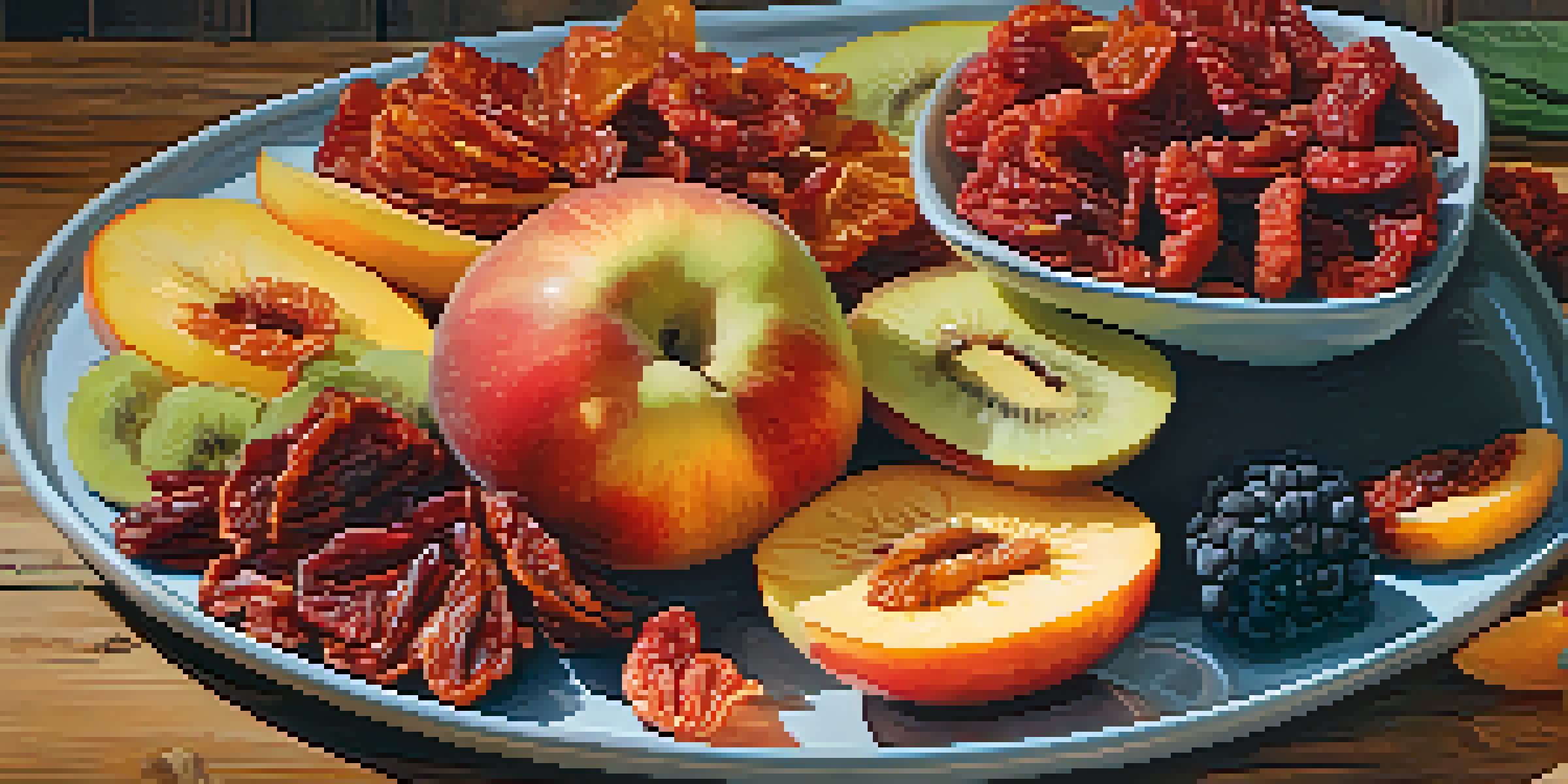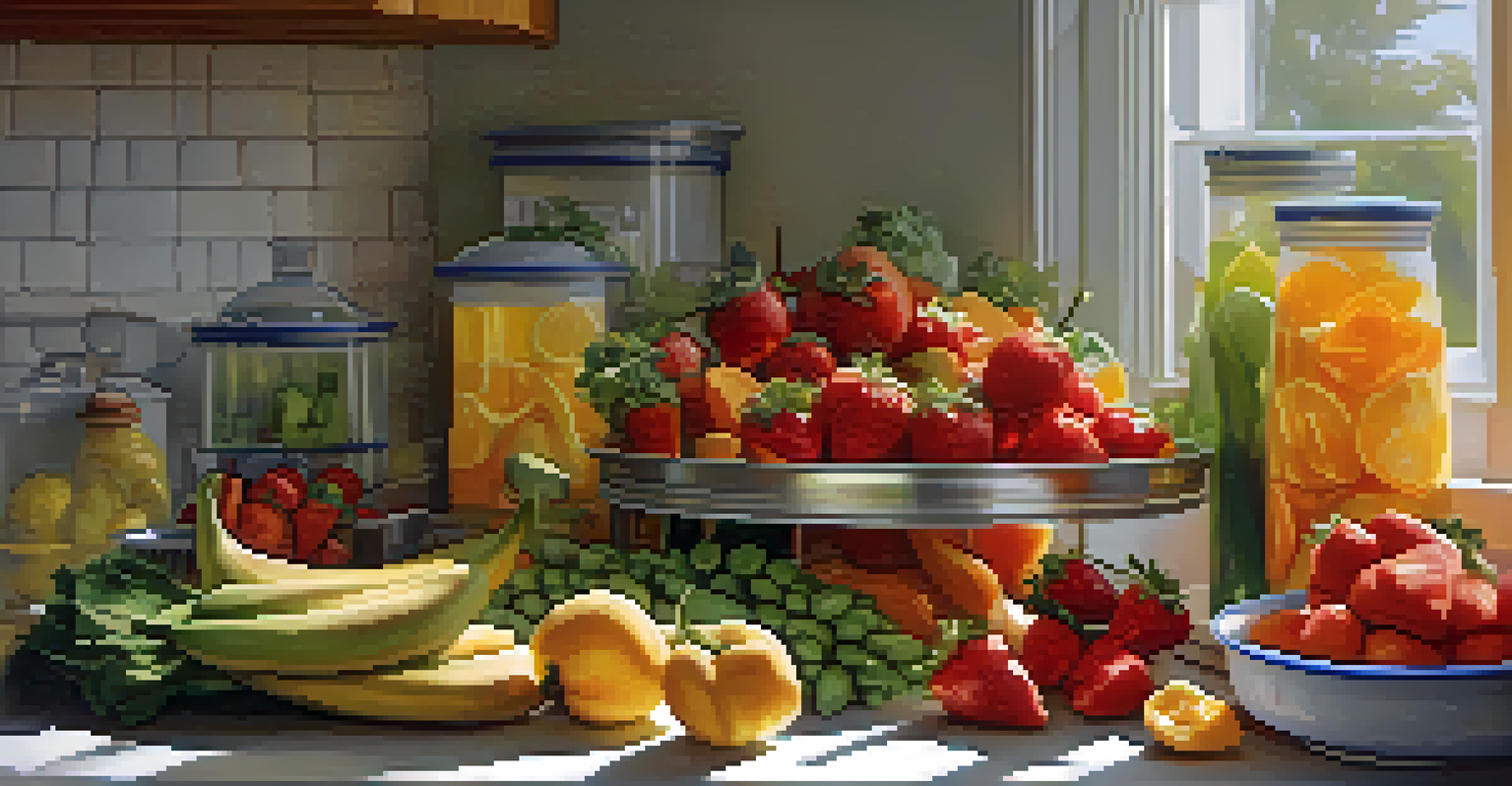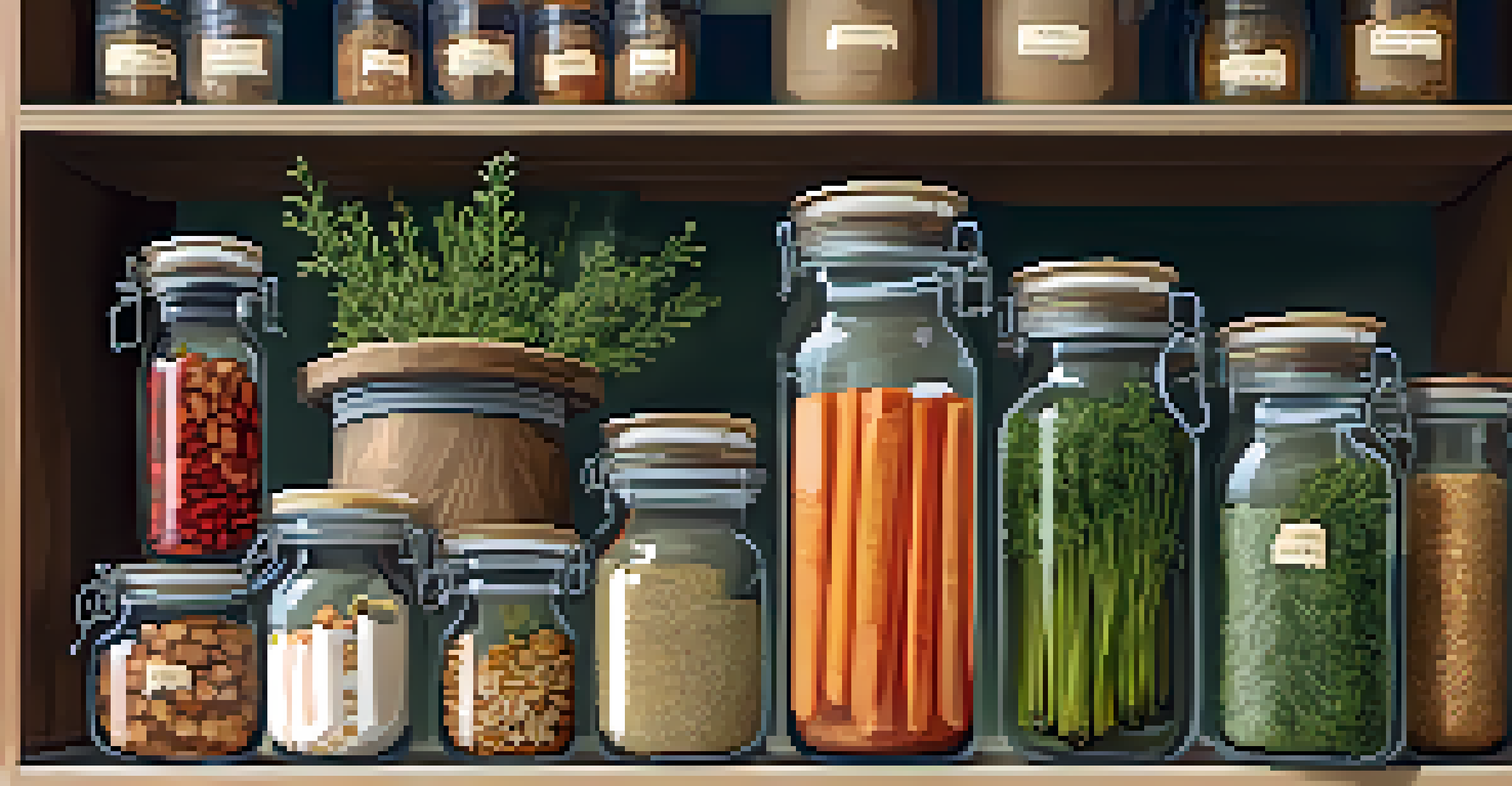The Art of Dehydrating: Intensifying Flavors in Raw Foods

Understanding Dehydration: A Culinary Technique
Dehydration is the process of removing moisture from food, which intensifies its flavors and extends shelf life. This technique has been used for centuries, dating back to ancient civilizations that relied on it for food preservation. By concentrating the natural sugars and flavors in the food, dehydration transforms even the simplest ingredients into something spectacular.
Dehydration is the most effective way to preserve food and retain its nutrients while enhancing flavors.
Imagine biting into a sun-dried tomato versus a fresh one; the difference is striking. The dehydration process enhances the sweetness and umami of the tomato, making it a powerhouse of flavor. Similarly, fruits like apples and peaches become chewy, sweet snacks that pack a flavor punch compared to their fresh counterparts.
Not only does dehydrating food enhance taste, but it also retains most of the nutrients, making it a healthy option. This method is particularly appealing for those looking to maintain a nutritious diet while enjoying concentrated flavors in their meals.
The Benefits of Dehydrating Raw Foods
One of the primary benefits of dehydrating raw foods is the enhancement of flavors. As moisture is removed, the remaining compounds become more pronounced, allowing you to experience the essence of each ingredient. This makes dehydrated foods a fantastic addition to salads, soups, or as snacks on their own.

Another advantage is the extended shelf life of dehydrated foods. Without moisture, the growth of microorganisms is inhibited, allowing your favorite fruits, vegetables, and herbs to last much longer without spoiling. This not only saves you money but also reduces food waste, making it an eco-friendly choice.
Dehydration Enhances Flavor
The process of removing moisture intensifies the flavors of fruits and vegetables, transforming simple ingredients into delicious snacks.
Dehydrated foods also offer convenience, as they are lightweight and easy to store. Whether you're hiking, traveling, or simply looking for a quick snack at home, having dehydrated options on hand means you can enjoy nutritious and tasty food wherever you go.
Choosing the Right Foods to Dehydrate
When it comes to dehydrating, not all foods are created equal. Some fruits and vegetables lend themselves beautifully to this process, while others may not yield the desired results. For instance, bananas, tomatoes, and bell peppers are excellent choices, as they dehydrate well and retain their flavors.
The essence of a fruit or vegetable is intensified when moisture is removed, transforming simple ingredients into culinary treasures.
It's important to select ripe, high-quality produce for dehydration. The better the starting ingredient, the better the end product will taste. For example, using ripe strawberries will result in sweet, concentrated bites, while under-ripe ones may lead to a less satisfying flavor.
Additionally, consider the textures of the foods you choose. Leafy greens can become crispy and flavorful, while denser vegetables like carrots or sweet potatoes will become chewy and sweet. Experimenting with different foods will help you discover your favorites and expand your dehydrating repertoire.
The Dehydration Process: Step-by-Step Guide
Dehydrating food is a straightforward process that can be done using various methods, including sun drying, oven drying, or using a dehydrator. Each method has its pros and cons, but they all revolve around the same basic principle: removing moisture. It's essential to slice your chosen foods evenly to ensure uniform drying.
Start by washing your produce thoroughly and cutting it into appropriate sizes. For fruits, consider pre-treating them with lemon juice to prevent browning. Then, arrange the pieces in a single layer on your dehydrator trays or baking sheets, making sure they aren't touching each other.
Extended Shelf Life Benefits
Dehydrated foods last longer without spoiling, reducing food waste and saving money.
Set the temperature according to the type of food you're dehydrating, and let the magic happen! Depending on the method and the food, dehydration can take anywhere from a few hours to a day. Once done, store your dehydrated goods in airtight containers, and enjoy the intensified flavors whenever you like.
Creating Flavor Combinations with Dehydrated Foods
Dehydrated foods can open up a world of flavor combinations that are both exciting and delicious. By mixing different dehydrated fruits, vegetables, and herbs, you can create unique snacks or seasoning blends that enhance your dishes. For instance, combining dehydrated apples with cinnamon creates a delightful snack that’s perfect for fall.
You can also use dehydrated ingredients to elevate your cooking. Imagine adding a sprinkle of dehydrated garlic or onion powder to your dishes for an instant flavor boost. These concentrated flavors can transform a simple meal into something extraordinary without much effort.
Experimenting with different flavor pairings can lead to surprising discoveries. Try pairing sweet dehydrated fruits with savory nuts or spicy dehydrated vegetables with sweet dips. The possibilities are endless, and you'll find that dehydrating can truly expand your culinary creativity.
Storing and Using Dehydrated Foods
Proper storage is key to maintaining the quality of your dehydrated foods. Once they are fully dried, store them in airtight containers in a cool, dark place. This prevents moisture from re-entering and keeps your snacks fresh for months. Glass jars, vacuum-sealed bags, or Mylar bags with oxygen absorbers are excellent options for long-term storage.
Using dehydrated foods in your meals is as simple as rehydrating them or using them as-is. For instance, you can soak dehydrated fruits in water or juice for a few hours to plump them back up before adding them to cereals or salads. Alternatively, toss them directly into soups or stews for a burst of concentrated flavor.
Versatile Cooking Applications
Dehydrated foods can be easily incorporated into various dishes, offering a convenient way to enjoy concentrated flavors and nutrients.
Don't forget to experiment! Try adding dehydrated vegetables to smoothies for added nutrition, or grind them into powders to use as seasoning. The versatility of dehydrated foods allows you to get creative in the kitchen while enjoying the benefits of intensified flavors.
Final Thoughts: Embracing the Dehydration Journey
The art of dehydrating raw foods is not just about preservation; it's about enhancing flavors and enjoying nutritious snacks. As you delve into this culinary adventure, you'll discover new ways to appreciate your favorite ingredients. Each batch of dehydrated goodies can become a delightful surprise, offering unique tastes and textures.
Whether you're a seasoned chef or a kitchen novice, dehydrating food is an accessible technique that can elevate your culinary repertoire. With a little practice, you’ll soon find yourself creating delicious snacks and meals that reflect your personal taste and creativity.

So why not give it a try? Embrace the world of dehydrating and unlock the potential of your raw foods, transforming them into flavor-packed delights that are sure to impress.